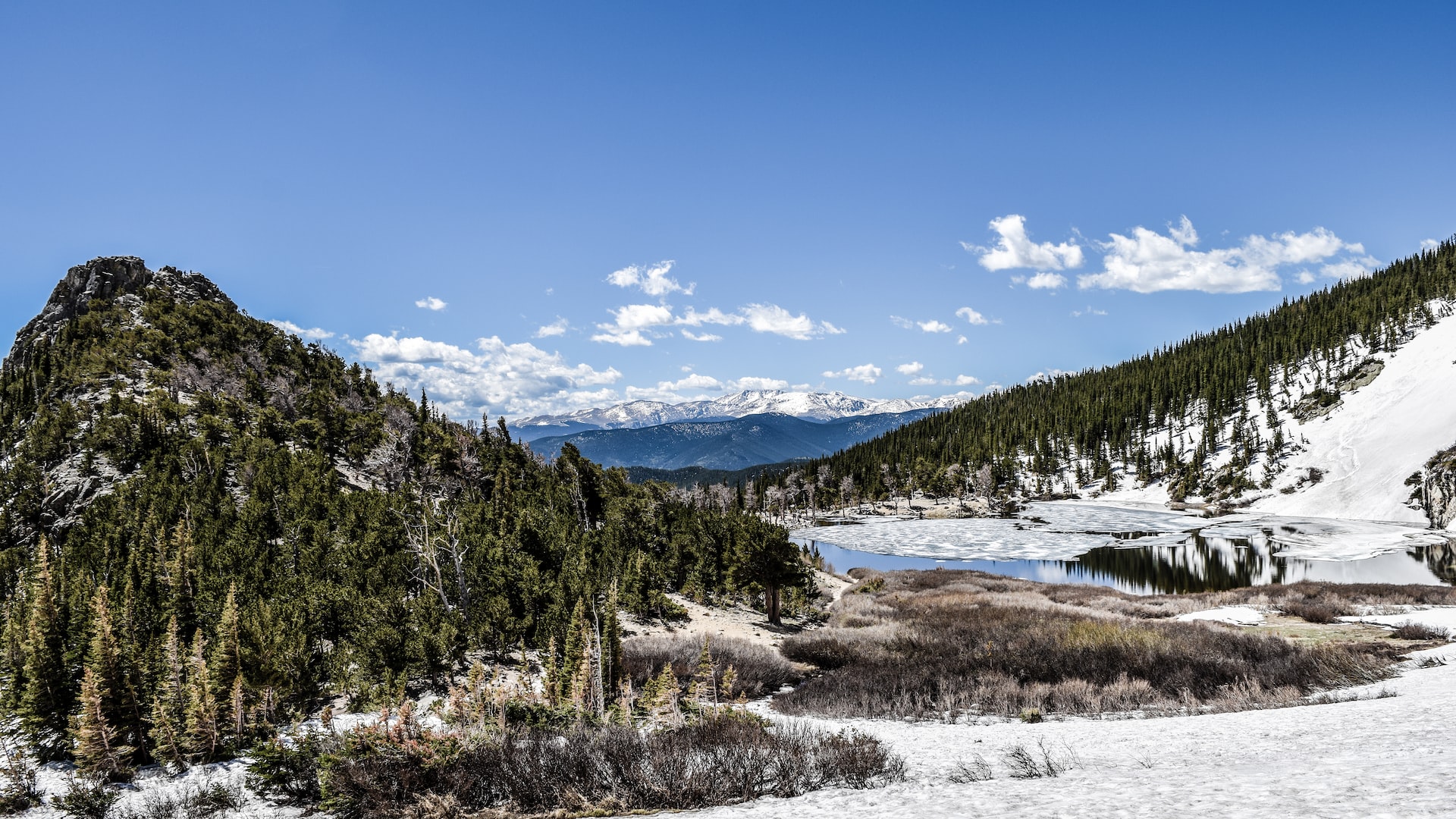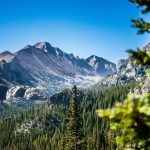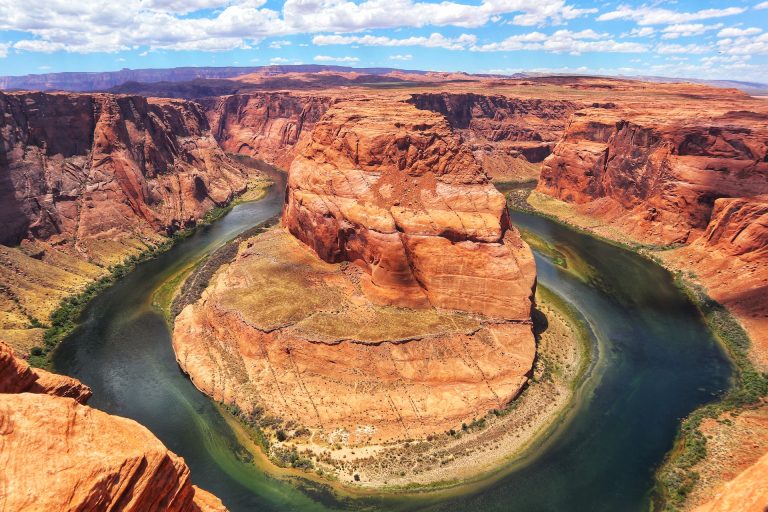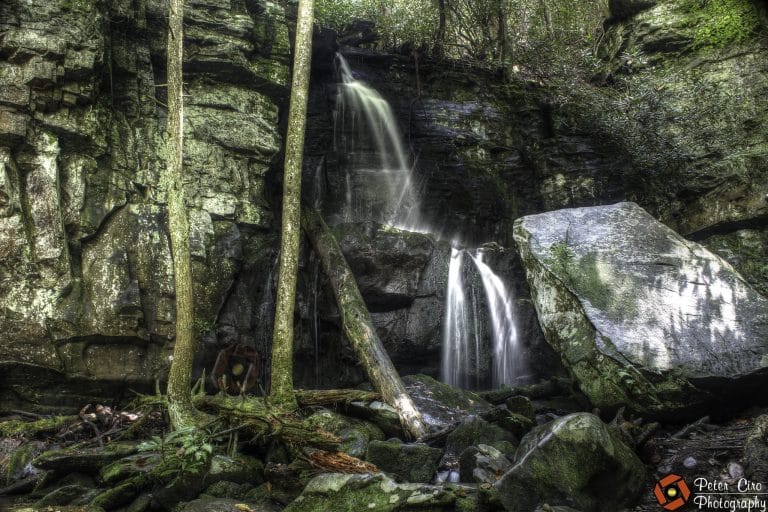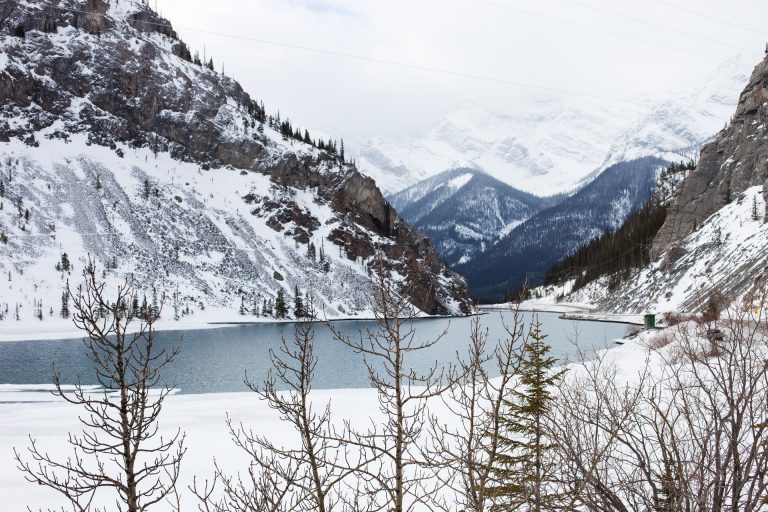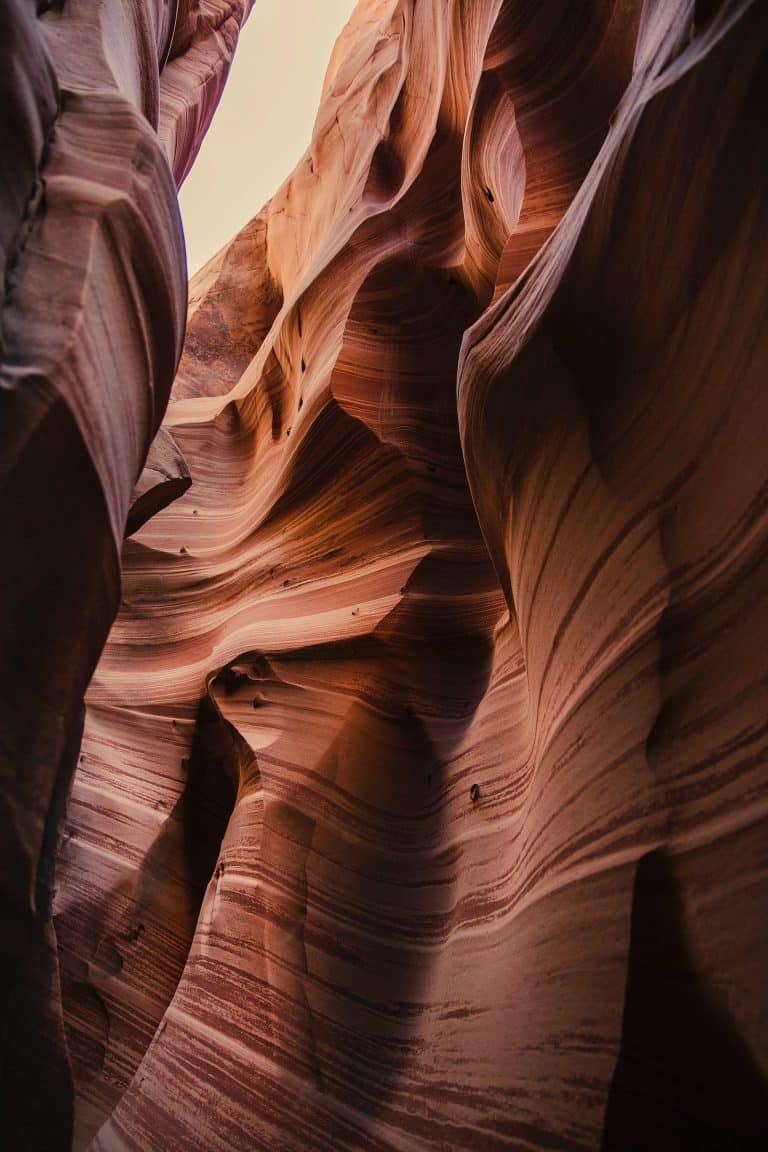Hiking to St. Mary’s Glacier in Idaho Springs, CO
St. Mary’s Glacier is close to, but not located inside, Rocky Mountain National Park. While the glacier is not within the park boundaries, it is located in the Arapaho National Forest and is accessible via a short hike from its parking lot, which is located on private property.
The trail head is located in the small historic town of Idaho Springs, Colorado.
Getting to St. Mary’s Glacier
St. Mary’s Glacier is located about 40 miles northwest of the town of Idaho Springs, Colorado and about 57 miles west of Denver. To get here from Idaho Springs, you can take I-70 west to exit 238 for Highway 103. Turn left on 103, and follow it for about 5 miles until you reach the parking area for the trail.
The drive from Denver to St. Mary’s Glacier trailhead is about 1 hour and 15 minutes long, and from Idaho Springs is about 45 minutes.
The address to punch into your GPS is 7599 Fall River Rd, Idaho Springs, CO 80452.
The coordinates to the parking area are 39.827987, -105.642252, (Google Maps link).
The Parking Situation
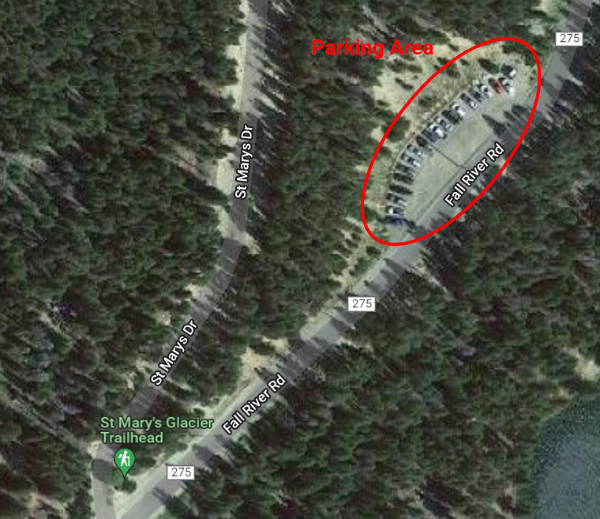
Parking at the trailhead is located on private land. There is a $5 fee per car, per day to park.
The parking lot is relatively small, and right off Fall River Road. There are usually enough spaces – especially if you get there early. During peak summer and winter months, it can fill up quickly, so it’s best to arrive early in the day to ensure a spot. There is also a small amount of parking along the road leading to the trailhead, but it is not recommended to park there as it can block traffic.
Since skiing is allowed on the glacier, winter can be unusually busy with skiers hiking up the mountain to ski down the glacier.
Hike St. Mary’s Glacier
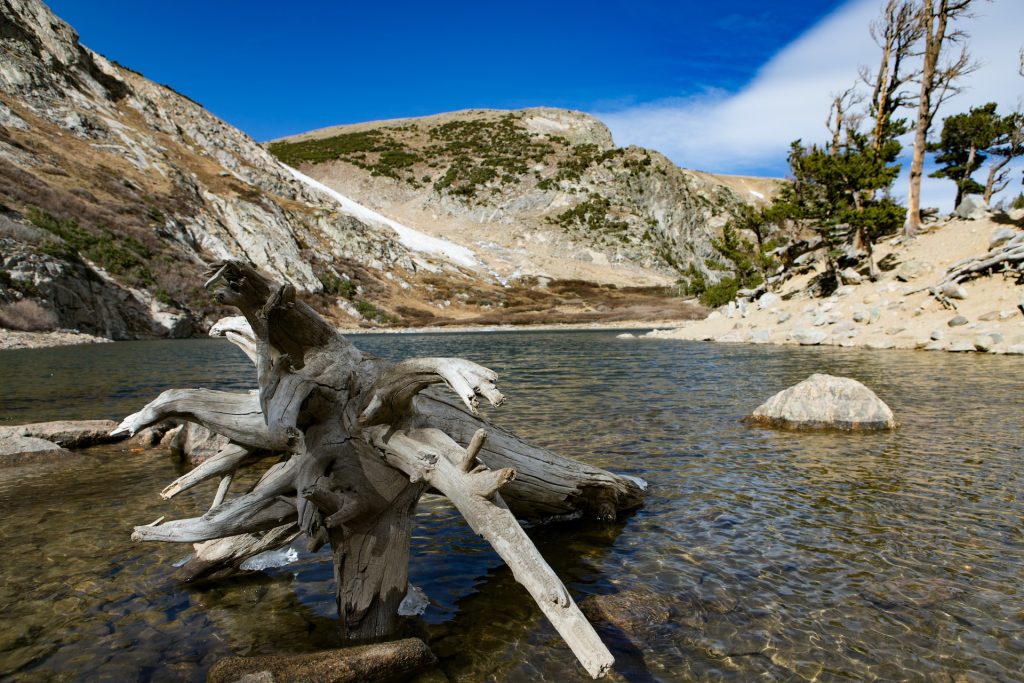
The St. Mary’s Glacier hike is surprisingly short and easy, making it a popular hiking trail in the area. The trailhead is located a short walk from the parking lot. The trail’s entrance is well-marked, but the trail itself is not. However, the St. Mary’s trail follows a well-defined path that isn’t too hard to make out where it goes.
The trail is a mix of dirt and gravel, and it is steep in places, but it is not overly difficult. The rocky climb has a total distance of about 3/4 mile one way, or 1.5 mile round trip. It does gain about 500 feet in elevation, though. Waterproof hiking boots are definitely recommended for this trail.
Hiking onto the Glacier
The trail technically ends at the base of the glacier. In terms of getting onto the glacier, there are two trains of thought:
The first is that climbing on it is not recommended due to environmental concerns. The glacier is a fragile ecosystem, and climbing or hiking onto the glacier would eventually cause it to degrade and melt even faster than what it is currently.
The second is to do it, but be careful. In fact, Saint Mary’s Glacier is actually a popular skiing destination. The hike from the trail continues to the summit of the glacier climbs about 1,000 ft, and is a popular place for skiers to get on their skis in the summer.
Skiing on the Glacier
The glacier’s “ski slope” is about a half mile in length, and has about a 14% average grade slope. It has a mix of beginner, intermediate and expert-level sections, however if I had to give it a singular grade, it would be expert (black diamond).
The summit of the glacier sits at 11,375 feet, and the base of the glacier sits at 10,750 ft. This provides about a 625 ft vertical drop, which would be around 1,000 feet in the winter if you ski down to the snow-covered mountain all the way to the trailhead.
The Ecology of St. Mary’s Glacier
St. Mary’s Glacier is a small cirque glacier, which is a type of glacier that forms in a bowl-shaped hollow or depression on the side of mountains. It is one of the smallest glaciers in Colorado, and is currently less than an acre in total size. The glacier drains into St. Mary’s Lake, which this trail circles.
Climate change has caused a significant retreat of the glacier over the years, as with most glaciers around the world. The retreat has been caused by the warming temperatures, which have caused the snow and ice to melt at a faster rate than it can be replenished by snowfall. The USGS (United States Geological Survey) states that St. Mary’s glacier has shrunk by about 80% in the past 100 years. Unfortunately, this is not unique to St. Mary’s Glacier, as most glaciers in the US and worldwide are receding at a truly alarming rate due to global warming.
Weather Considerations at St. Mary’s Glacier
The trail to St. Mary’s Glacier is open year-round, but the level of accessibility and safety can vary depending on the season.
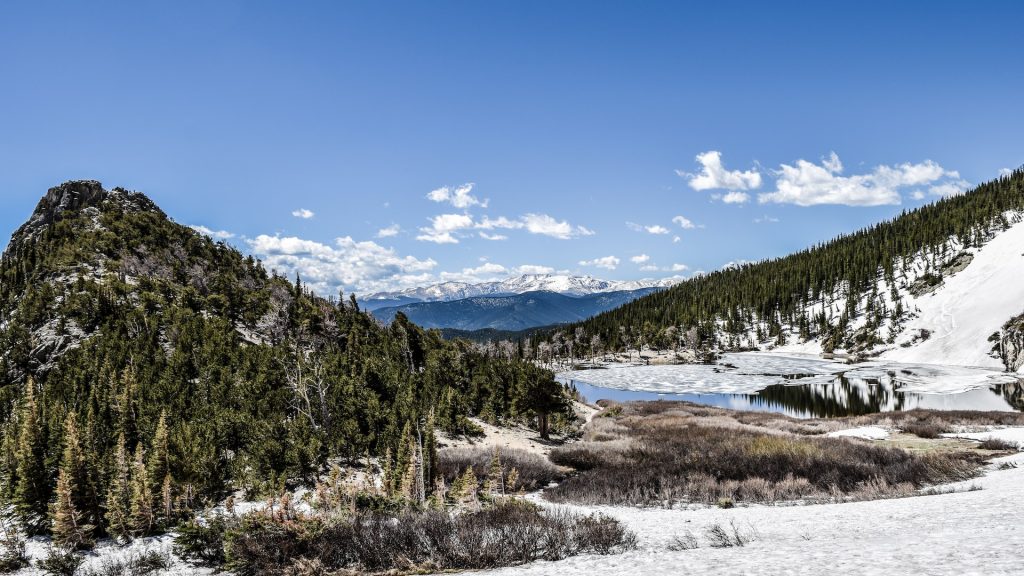
During the summer and fall, the trail is usually clear and easy to hike, but during the winter and spring, the trail can be covered in snow and ice, making it more difficult to hike and potentially dangerous. Snow shoes may be needed in the winter.
It’s worth mentioning that the trail to the glacier can be slippery and muddy, especially during the spring and early summer, when snow and ice are melting away. Just be cautious of your surroundings, especially some of the steeper parts of the trail.
